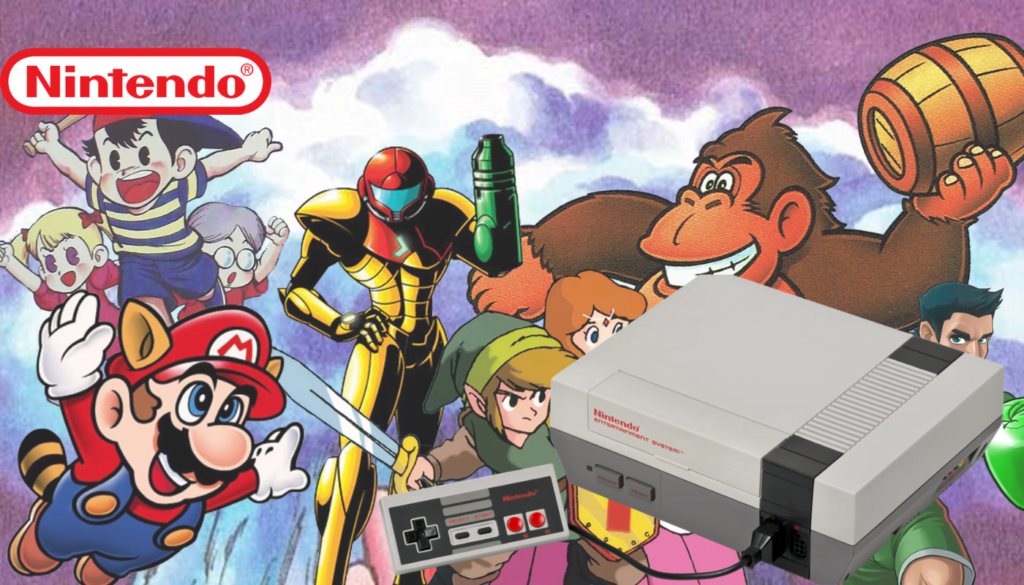
Hey, friends and curious people. Get ready as we are about to go on an exciting journey through the history of video games. From primitive pixels to virtual worlds full of life, the evolution of gaming is simply amazing. Let’s see how this wonderful medium evolved into today’s multi-billion-dollar industry that we all love.
Table of Contents

The Early Days: From Tic-Tac-Toe to Space Battles (1948–1970)
Our story begins in the 1950s, when computers were huge and room-filling machines. While these giant machines were not designed for entertainment, the first people who used them never missed the fun of experimentation. Here come Bertie the Brain (1950) and Nimrod (1951), two early electronic games that were more designed as demonstrations of technology, not just for fun. These early innovations are key milestones in the history of video games.
But the real breakthrough came in 1958 with Tennis for Two. The game was created by William Higinbotham and became a sensation at the Brookhaven National Laboratory exhibition. Using an analog computer and oscilloscope, two players hit a light spot side by side—the first small glimpse into the world of video gaming.

Then in 1961 came Spacewar!, developed by MIT students for the PDP-1 mainframe computer. Unlike its predecessors, this game wasn’t just confined to the exhibition; it spread to other institutions across the U.S. via shared source code. This was the first time a game became a group experience, a first step toward today’s massive multiplayer experiences.
The Rise of Arcades and Home Consoles (1970s)
Moving forward to the 70s, a golden era for video games. Many important developments occurred in video games history during this time, as iconic releases like Pong and Space Invaders defined the future of arcade and home gaming. Atari, founded in 1972, revolutionized the industry with Pong. Simple yet addictive, Pong wasn’t just a game—it was the world’s first video game machine with a coin slot and display screen. It was the beginning of making video games a mainstream entertainment option.

The arcade scene exploded in 1978 with the release of Space Invaders, which created a cultural craze that had youngsters rushing to spend their pocket money in arcades. The Atari 2600, launched in 1977, further confirmed its place in the history of home console gaming. Its interchangeable cartridges allowed players to enjoy many games, forming the basis of today’s diverse gaming experiences.
You can still experience the nostalgia of these classics with the Atari Flashback 8 Gold Console and Space Invaders Arcade Game.
The Birth of Iconic Games and the Crash (1980s)
The 1980s were a defining time for video games. Iconic titles such as Pac-Man (1980), Mario Bros (1983), and Tetris (1984) were launched, each one introducing new innovations. Home computers started to become cheaper, and the gaming market grew rapidly. But, the industry also saw a major setback in 1983 when the video game crash occurred. Companies like Atari faced difficulties, such as the infamous E.T., The game is often considered one of the best video games of all time.

But, out of this confusion emerged new champions. Commodore’s Commodore 64 (1982) and Nintendo’s NES (1985) revitalized the market. Nintendo’s innovative approach, which included its library of powerful games and better graphics, defined the future of gaming, setting standards that would influence the industry for decades to come.
For a taste of 1980s nostalgia, check out the Commodore 64 Mini and the NES Classic Edition Console.
A New Dimension: The 1990s and 3D Gaming
As we entered the 1990s, video games took a dramatic leap forward. The introduction of 3D graphics transformed gaming worlds, making them more immersive than ever. Sony’s PlayStation, released in 1994, was a game-changer with its advanced graphics and gameplay.

This decade saw the rise of titles that are still beloved today, including Tomb Raider (1996) and Command & Conquer (1995). The era also introduced first-person shooters like Wolfenstein 3D (1992), sparking debates about violence in video games—discussions that continue to this day.
Experience the best of 90s gaming with the PlayStation Classic Console and Tomb Raider: Definitive Survivor Trilogy.
The Online Revolution and Expansive Worlds (2000s)
The turn of the millennium has opened doors of new opportunities for gamers with the help of online play. This period is an important chapter in the history of video games, filled with global connectivity and expansive open-world experiences. LAN parties used to be fun, but the advent of the internet allowed gamers to connect on a global scale. Games like World of Warcraft (2004) became online sensations, which led to the boom of multiplayer and online gaming.
The 2000s also saw the emergence of powerful graphics, thanks to advancements in technology. Open-world games like Grand Theft Auto: San Andreas (2004) and Minecraft (2010) offered expansive environments where players could explore and create at their leisure. The concept of sandbox games, where players can freely shape their virtual worlds, became a major trend.
Dive into the online and open-world experiences with World of Warcraft: Dragonflight and the Minecraft Starter Collection.
Gaming’s Mainstream Success and Mobile Boom (2010s)
By the 2010s, video games had firmly established themselves as a dominant entertainment medium. The industry surpassed film and music in revenue, with games available on every conceivable platform. Titles like Red Dead Redemption 2 (2019) showcased sophisticated storytelling and emotional depth, while the rise of “Let’s play” videos on YouTube brought gaming into the spotlight like never before.
Mobile gaming surged, with games like Pokémon GO and Among Us reaching millions of players worldwide. Gaming was no longer just for kids and teenagers; adults were joining in the fun, turning gaming into a ubiquitous part of daily life.
Get the latest hits with Red Dead Redemption 2 and Pokémon GO Plus.

The Future: Virtual Worlds and Metaverse (2020s)
As we enter the decade of 2020, the history of video games is taking an exciting turn with rapid evolution and groundbreaking advancements. The concept of the Metaverse, which promises immersive digital worlds, is now becoming very popular, pushing the boundaries of gaming. Games like Roblox are leading the way in this area, giving players the opportunity to create and monetize their own virtual experiences.
Technological advancements are further expanding gaming simulations. PlayStation 5 and Xbox Series X/S deliver amazing graphics and performance, while virtual and augmented reality technologies are providing new opportunities to experience games. The integration of AI is making game worlds more dynamic and responsive, and the rise of cloud gaming is helping make high-quality games accessible to a broader audience.
Explore the future of gaming with the PlayStation 5 and the Meta Quest 3.
That’s a quick look at the history of video games. From simple beginnings to rich digital worlds, gaming has evolved greatly. Whether you’re a veteran or new to gaming, there’s always more to discover.
For more insights into the latest technological trends and innovations, explore our technology section.


